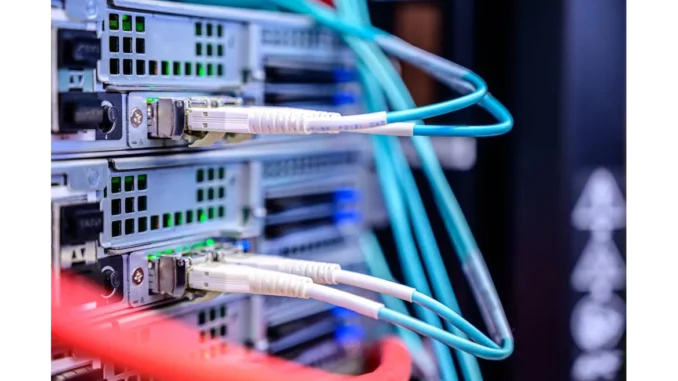
Summary
Small Business Cybersecurity: Protecting Network-Attached Storage (NAS) Systems
In an era where data security is paramount, small businesses and individuals utilising network-attached storage (NAS) systems must adopt robust cybersecurity measures. As these devices become increasingly integrated into daily operations for data management, they present enticing targets for cybercriminals. This article outlines seven essential strategies to fortify NAS systems against emerging threats.
Main Article
With the rise of digitalisation, NAS devices have become indispensable for many businesses and individuals seeking efficient data storage solutions. However, their connectivity to the internet makes them vulnerable to cyber threats. Ensuring the security of these systems involves not just basic precautions but a comprehensive approach to fortification.
Change Default Admin Credentials
The initial step in safeguarding your NAS is altering the default administrative credentials. Typically, NAS devices are shipped with generic login details, which are easily exploited by malicious actors. “Changing both the username and password to something complex is not just advisable; it’s necessary,” says cybersecurity expert, Alex Thompson. A robust password should combine upper and lower case letters, numbers, and special characters. Avoid reusing passwords across different platforms to further mitigate risks.
Implement SSL Encryption
Implementing Secure Sockets Layer (SSL) encryption is crucial for securing data in transit between NAS and other devices. SSL ensures that data transfers are encrypted, thus obstructing interception by hackers. Users should verify that their NAS settings support SSL and that their connection URL begins with “https://”, signifying a secure connection.
Enable Two-Factor Authentication (2FA)
Two-factor authentication enhances security by requiring an additional verification step, such as a text message code, alongside the password. This means that even if a password is compromised, access is denied without the second verification method. Most modern NAS systems facilitate 2FA for both admin and general user accounts.
Activate the Built-In Firewall
Most NAS devices include built-in firewalls to thwart unauthorised access attempts. Configuring these firewalls to accept connections only from trusted IP addresses and using auto-blocking features can significantly bolster security. Cybersecurity consultant, Emily Richards, advises, “Firewalls are your first line of defence; ensure they’re properly configured to prevent brute-force attacks.”
Disable Unused Services
NAS devices often support a myriad of services such as FTP, SSH, and SMB. Disabling any services that are not in use is essential, as each active service could become a potential vulnerability. Reducing the number of accessible services narrows the attack surface, thereby increasing the security of the NAS system.
Change Default Ports
By altering the default ports used by NAS devices, users can further obscure their systems from cybercriminals. Attackers frequently scan for devices operating on standard ports, so changing these to non-standard alternatives creates an additional layer of difficulty for potential intruders.
Regularly Update Software and Firmware
Software and firmware updates are critical in addressing and patching known vulnerabilities. Manufacturers often release updates that enhance both functionality and security. It is advisable to enable automatic updates where possible and to manually check for new releases regularly.
Secure Your Home Network
Securing your NAS is only part of the broader security equation. Ensuring that your home network is fortified with strong router passwords and WPA2 encryption is crucial. Regular updates to the router’s firmware and avoiding unsecured public Wi-Fi for NAS access are further recommended practices.
Consider VPN for Remote Access
For those needing to access their NAS remotely, a virtual private network (VPN) can provide a secure channel, safeguarding data from potential eavesdroppers. This is particularly important when connecting via public or unsecured networks.
Detailed Analysis
The need for enhanced cybersecurity measures, particularly for NAS devices, reflects broader trends in digital security. As more small businesses rely on digital solutions, they inadvertently become attractive targets for cybercriminals. Cybersecurity expert, Samir Patel, notes, “The shift towards remote work and digital data storage has led to a surge in attacks on small business infrastructure, emphasising the need for robust security protocols.”
Additionally, the increasing sophistication of cyber threats means that static security measures are no longer sufficient. The dynamic nature of cyber threats necessitates a proactive approach to security, encompassing regular updates and layered defence strategies.
Further Development
As the cybersecurity landscape continues to evolve, NAS security measures must adapt accordingly. Future developments may include more intuitive security features integrated directly within NAS systems, reducing the onus on users to manually configure complex settings. Enhanced AI-driven threat detection and response mechanisms could also become standard, providing real-time protection against emerging threats.
Readers are encouraged to follow ongoing coverage of cybersecurity trends and best practices to ensure their systems remain protected against the latest threats. As new technologies emerge, staying informed will be crucial in maintaining robust data security.

